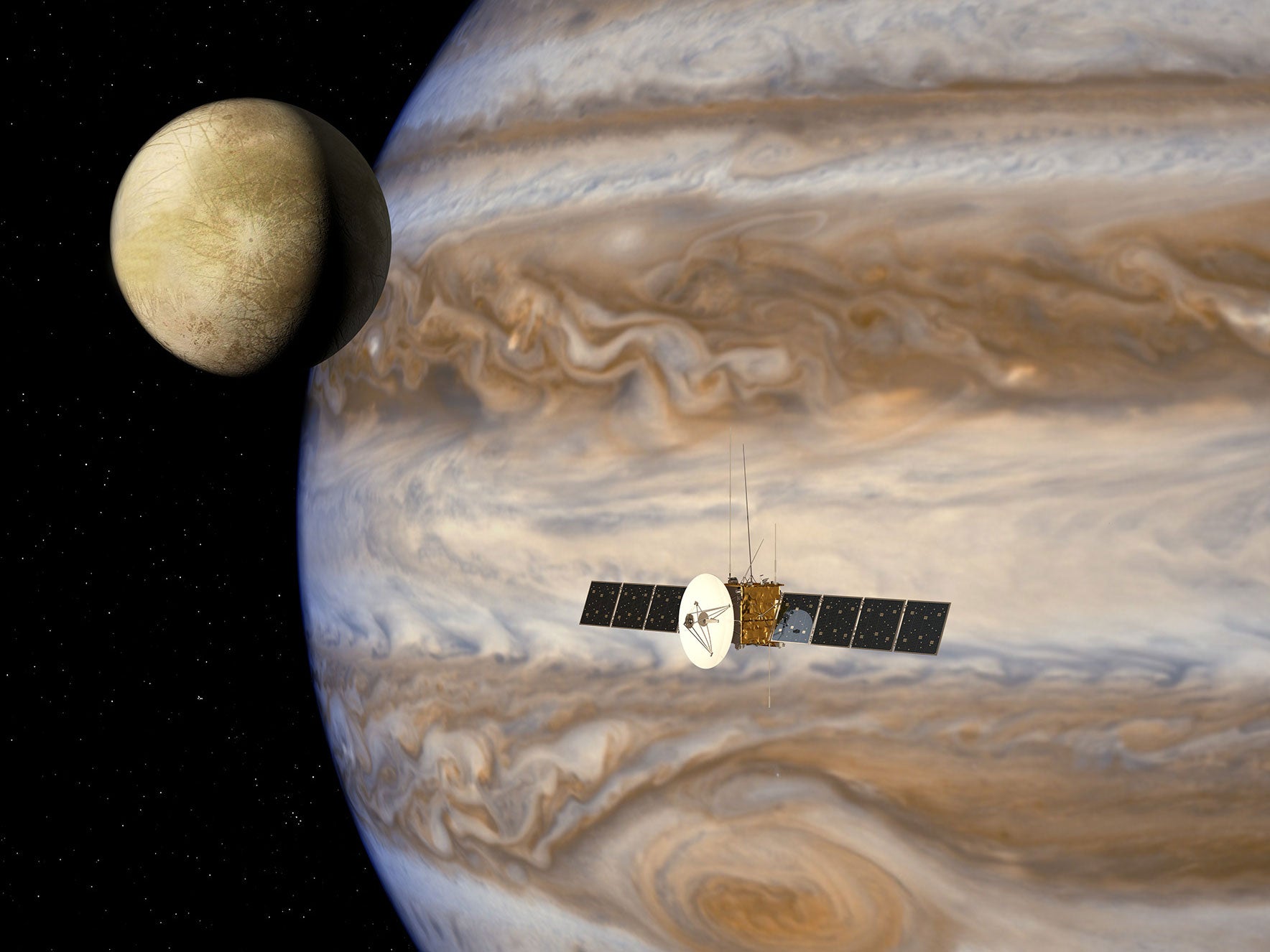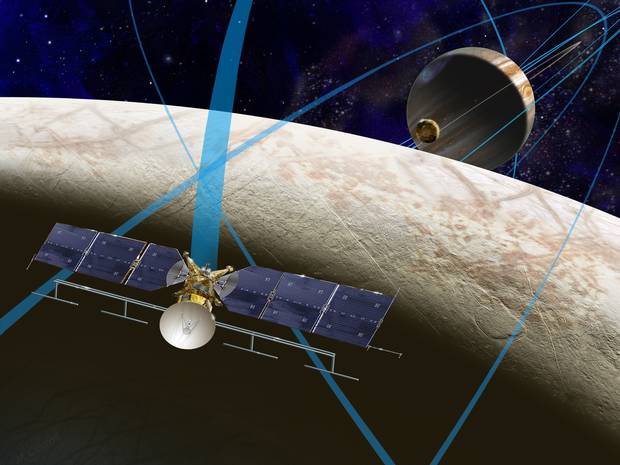Search for life on Jupiter's icy moons moves a step closer as work starts on Juice spacecraft
The spacecraft will search for evidence of alien life on Europa, Callisto and Ganymede

Your support helps us to tell the story
From reproductive rights to climate change to Big Tech, The Independent is on the ground when the story is developing. Whether it's investigating the financials of Elon Musk's pro-Trump PAC or producing our latest documentary, 'The A Word', which shines a light on the American women fighting for reproductive rights, we know how important it is to parse out the facts from the messaging.
At such a critical moment in US history, we need reporters on the ground. Your donation allows us to keep sending journalists to speak to both sides of the story.
The Independent is trusted by Americans across the entire political spectrum. And unlike many other quality news outlets, we choose not to lock Americans out of our reporting and analysis with paywalls. We believe quality journalism should be available to everyone, paid for by those who can afford it.
Your support makes all the difference.The search for alien life is moving to the icy moons orbiting Jupiter following the discovery of organic materials hailed as the “building blocks of life”.
Work is due to start over the coming days on the development of a spacecraft for the European Space Agency (ESA) mission.
Named Juice (the JUpiter ICy moons Explorer), it is scheduled for launch in 2022 and arrive in the Jovian system around Jupiter eight years later.

A spokesperson for the ESA said: “For three and a half years, JUICE will sweep around the giant planet, exploring its turbulent atmosphere, enormous magnetosphere, and tenuous set of dark rings, as well as studying the icy moons Ganymede, Europa, and Callisto.
“All three of these planet-sized satellites are thought to have oceans of liquid water beneath their icy crusts and should provide key clues on the potential for such icy moons to harbour habitable environments.”
Two targeted Europa flybys will focus on the composition of material on its frozen surface, and the first exploration below the surface of an icy moon.
In 2013, Nasa announced that data from its Galileo mission revealed the existence of clay-like minerals on the surface of the moon from an asteroid or comet impact.
“Finding the rocky residues of this comet crash on Europa's surface may open up a new chapter in the story of the search for life on Europa,” research scientist Jim Shirley said at the time.

Europa is considered by many astronomers to be the most likely place in our Solar System to support alien life because of the combination of water in its subsurface ocean, an energy source and organic compounds.
Jupiter’s polar region will also be observed and “frequent” passes of Callisto will assess the moon.
The mission will end with a dedicated, eight-month tour around Ganymede, where the spacecraft will perform detailed investigations of the moon and its interaction with the environment.
Juice will be equipped with 10 separate state-of-the-art instruments, including cameras, spectrometers, an ice-penetrating radar, an altimeter, radios and sensors to monitor the magnetic fields and charged particles in the Jovian system.
Another experiment will combine data from the spacecraft telecommunication system and ground-based instruments.
Juice will be Europe’s first mission to reach the largest planet in the Solar System and has been several years in the making.
French company Airbus Defence and Space has been selected as the prime contractor for the Juice project in a deal worth €350.8 million (£250 million), which was struck last week.
The contract covers industrial activities for the design, development, integration, test, launch campaign and commissioning of the spacecraft.
It will be made in Tolouse but developed by teams spanning the UK and 15 other European countries, the USA and Japan, using national funding.
The development comes after Nasa’s New Horizons probe took the clearest photographs of Pluto yet, revealing an icy world with glacier-like objects flowing on its surface.
Join our commenting forum
Join thought-provoking conversations, follow other Independent readers and see their replies
Comments